#Jörg Schmidt-Reitwein
Explore tagged Tumblr posts
Text

Nosferatu the Vampyre (1979)
4 notes
·
View notes
Text













Nosferatu the Vampyre (1979)
Dir. Werner Herzog
Language: English
#nosferatu the vampyre#1979#werner herzog#english#Klaus Kinski#Isabelle Adjani#Bruno Ganz#Roland Topor#cinematography: Jörg Schmidt-Reitwein#german cinema#film#screencaps#film screencaps#movie screenshots#movies
29 notes
·
View notes
Text

Nosferatu: Phantom der Nacht (1979) by Werner Herzog
Cinematography by Jörg Schmidt-Reitwein
4 notes
·
View notes
Text







Nosferatu the Vampyre (1979) (Dir. Werner Herzog) (DoP. Jörg Schmidt-Reitwein)
nosferatu is such a pathetic little creep in this film and a woman has to right the wrongs of a stupid man, it's great
3 notes
·
View notes
Text


CALIFICACIÓN PERSONAL: 6.5 / 10
Título Original: Nosferatu: Phantom der Nacht AKA Nosferatu; The Vampyre
Año: 1979
Duración: 106 min
País: Alemania
Dirección: Werner Herzog
Guion: Werner Herzog. Libro: Bram Stoker
Música: Popol Vuh
Fotografía: Jörg Schmidt-Reitwein
Reparto: Klaus Kinski, Isabelle Adjani, Bruno Ganz, Jacques Dufilho , etc
Productora: Coproducción Alemania-Francia; Werner Herzog Filmproduktion, ZDF, Gaumont
Género: Horror; Drama
TRAILER:
youtube
0 notes
Text





On the set of NOSFERATU: PHANTOM DER NACHT (1979), dir. Werner Herzog
#nosferatu the vampyre#nosferatu phantom der nacht#werner herzog#isabelle adjani#bruno ganz#clemens scheitz#jörg schmidt-reitwein#walter ladengast#german movies#german cinema#nosferatu#vampire#films#movies#on the set#behind the scenes#70s#yessferatu
39 notes
·
View notes
Photo










The Great Ecstasy of Woodcarver Steiner (Werner Herzog, 1974).
#the great ecstasy of woodcarver steiner#die große ekstase des bildschnitzers steiner#werner herzog#el gran éxtasis del escultor de madera steiner#jörg schmidt-reitwein#beate mainka-jellinghaus#walter steiner
72 notes
·
View notes
Photo

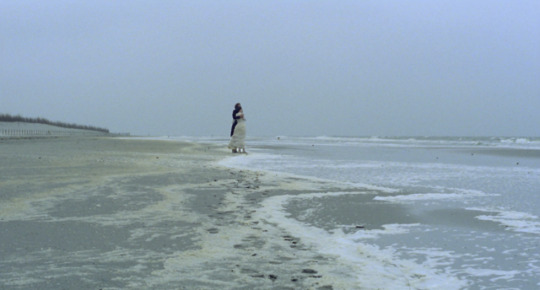
Nosferatu the Vampyre (1979) dir. Werner Herzog
#nosferatu the vampyre#werner herzog#cinematography#jörg schmidt-reitwein#german cinema#isabelle adjani#film stills#movies#aesthetic
9K notes
·
View notes
Photo










Nosferatu the Vampyre (1979)
Country: West Germany / France
Written & Directed by: Werner Herzog Based on the 1922 film Nosferatu & the novel “Dracula” by: Bram Stoker
Cinematography by: Jörg Schmidt-Reitwein
Edited by: Beate Mainka-Jellinghaus
Produced by: Herzog, Daniel Toscan du Plantier & Michael Gruskoff
Music by: Popol Vuh & Florian Fricke
Production Design by: Henning von Gierke
#Nosferatu the Vampyre#Movie#West Germany#France#Werner Herzog#Bram Stoker#Dracula#Jörg Schmidt-Reitwein#Beate Mainka-Jellinghaus#Daniel Toscan du Plantier#Michael Gruskoff#Popol Vuh#Florian Fricke#Henning von Gierke#Werner Herzog Filmproduktion#Twentieth Century Fox#Anchor Bay Entertainment#Shout! Factory#1970s#Horror
1 note
·
View note
Photo









Fata Morgana (1971)
Werner Herzog / Jörg Schmidt-Reitwein
#Jörg Schmidt-Reitwein#werner herzog#fata morgana#1971#cinema#movie#film#documentary#africa#german cinema#screenshots#screenshot#film stills#movie stills#film still#cinematography#cinematographer#cinematografia#mubi#landscapes#portrait#portraits
264 notes
·
View notes
Photo

The absence of love is the most abject pain.
Nosferatu the Vampyre (Nosferatu: Phantom der Nacht), Werner Herzog (1979)
#Werner Herzog#Klaus Kinski#Isabelle Adjani#Bruno Ganz#Roland Topor#Walter Ladengast#Dan van Husen#Jan Groth#Carsten Bodinus#Martje Grohmann#Jacques Dufilho#Jörg Schmidt Reitwein#Florian Fricke#Popol Vuh#Beate Mainka Jellinghaus#1979
6 notes
·
View notes
Photo

61 notes
·
View notes
Photo




“Death is not the worst. There are things more horrible than death.”
Nosferatu the Vampyre (1979) directed by Werner Herzog, cinematographer Jörg Schmidt-Reitwein
391 notes
·
View notes
Photo
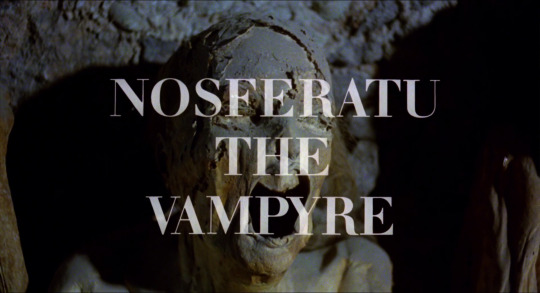
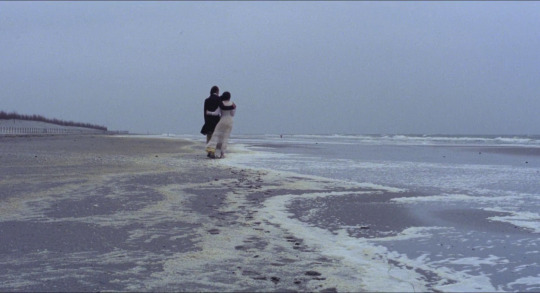



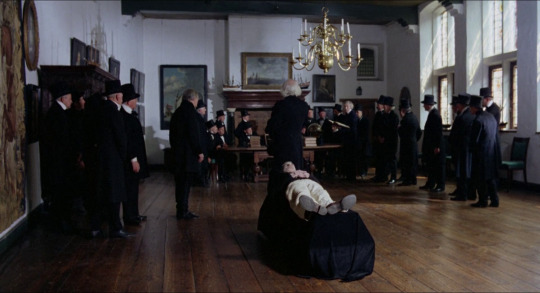


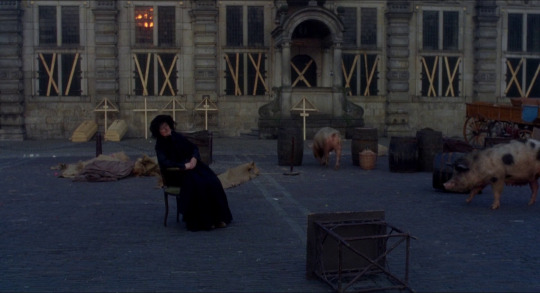

NOSFERATU: PHANTOM DER NACHT / NOSFERATU THE VAMPYRE (1979)
Director: Werner Herzog Cinematography: Jörg Schmidt-Reitwein
#nosferatu#nosferatu the vampyre#dracula#count dracula#count orlok#werner herzog#nosferatu 1979#nosferatu 1922#fw murnau#horror#horror movies#old horror movies#70s#70s movies#70s horror#70s horror movies#period horror movies#isabelle adjani#klaus kinski#bruno ganz#cinematography#classic horror movies#movies#movie#cinema#screencaps#screenshots#movie screencaps#movie screenshots
443 notes
·
View notes
Photo




Vanitas (1896) by Leo Putz
Nosferatu the Vampyre (1979) directed by Werner Herzog cinematography by Jörg Schmidt-Reitwein
#vanitas#leo putz#nosferatu#nosferatu the vampyre#werner herzog#jorg schmidt-reitwein#but what does it mean?#something about the real monster being man#idk
13 notes
·
View notes
Text
Response: The Great Ecstasy of Woodcarver Steiner

This film was compulsory viewing for our Documentary Film module :)
Directed by: Werner Herzog
Music by: Popol Vuh
Cinematographer: Jörg Schmidt-Reitwein
Editor: Beate Mainka-Jellinghaus
Release Year: 1974
Running Time: 45 mins
Language: German
My Rating: 4 / 5
Synopsis:
An exploration of Walter Steiner, a celebrated ski-flyer (similar to ski-jumping but characterised by higher jumps) with a full time occupation in carpentry. The documentary showcases his quest for a world record in ski-flying whilst also showing the dangers involved in the sport.
What I Liked:
The use of slower tempo, yet optimistic music over the footage of ski-flying. This created more emotional investment in the outcome of the jumps.
The amount of footage shown of failed jumps. This emphasised the danger of the sport, the willpower of the athletes, and the skill involved.
The interviews with Steiner feel very authentic and emphasise his personality.
I found it interesting to see the juxtaposition of Steiner’s demeanour in interviews which seemed somewhat nervous, with his confidence when jumping and in post-jump interactions. It showed a deep love of the sport.
Herzog played a visible role in the film, both as narrator, and appearing on camera. This is different from in his other films. After a little research I read that this was due to the fact that this film was made as part of a series aired on German TV and the station required him to appear on camera.
I like that the time spent working on the film is mentioned within it, making the documentary process itself as much of a part of the finished product as the subject of Steiner and ski-flying.
The shots in which Steiner is preparing for a jump, are filmed from a distance with a dirty frame. This makes it feel as though they were filmed secretly. Almost as though the viewer is watching some sort of sacred ritual being practiced that outside eyes are usually not able to see.
I like that one of the focuses of the film is the issues with non-athletes within the sport (e.g judges) not listening to experienced athletes when they express concerns with about the dangers of certain jumps. Instead pushing them to do the jumps because they will ‘set records’. A quote about this that I found to be particularly important being: “...they keep saying I brood too much, meaning I have to break my skull before they believe me.”
A more human side to athletes is shown, and the pressure that they feel to be the best and set records, as well as the crises that this pressure can lead to.
The use of birds as a link to ski-flying. Both visually, and in the story Steiner tells about his pet raven. The raven story almost feeling like an allegory. The harassment of the raven by other ravens linking to the way that Steiner is harassed by people within the sport to take larger risks.
Final Thoughts:
Although films about sport are not part of my typical viewing and not something I would usually seek out, I am glad that I had to watch this as compulsory viewing for the module as I enjoyed watching it. It was more than ‘a film about sport’ or just about an athlete, and more about a persons hopes, fears, and personality.
I also found the film to be inspiring in that Steiner talked of his fears before a jump, and that those fears never got easier, yet he faced them head on. Yet the message I took from it isn’t to simply face all fears head on no matter what, but also to respect your judgement. Something Steiner did when he voluntarily shortened the height of his jumps when those in charge didn’t listen to his safety concerns.
Overall, I really enjoyed this film, more so than I thought I would.
#documentary film module#film review#werner herzog#documentary film#documentary#documentary review#the great ecstasy of woodcarver steiner#film#films#movie#movies#ba film#study#studyblr#study blog#student#film student#film studyblr#film stuff#uni#university#second year#reel-em-in
5 notes
·
View notes